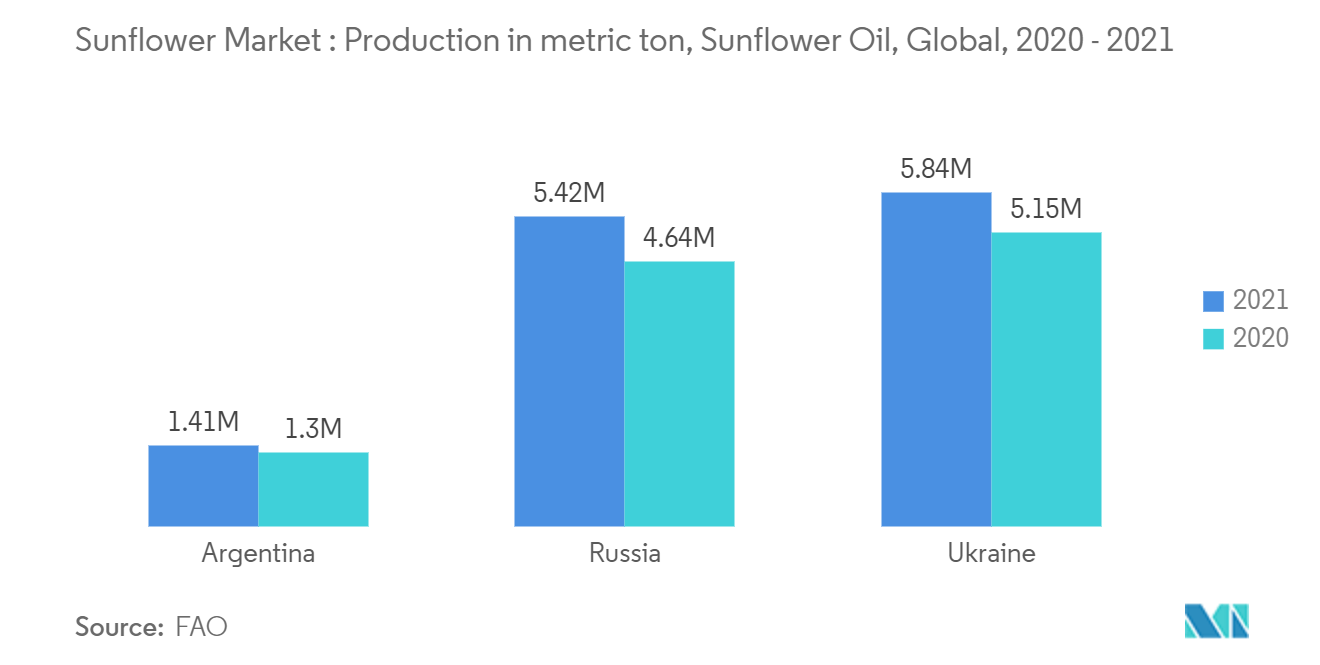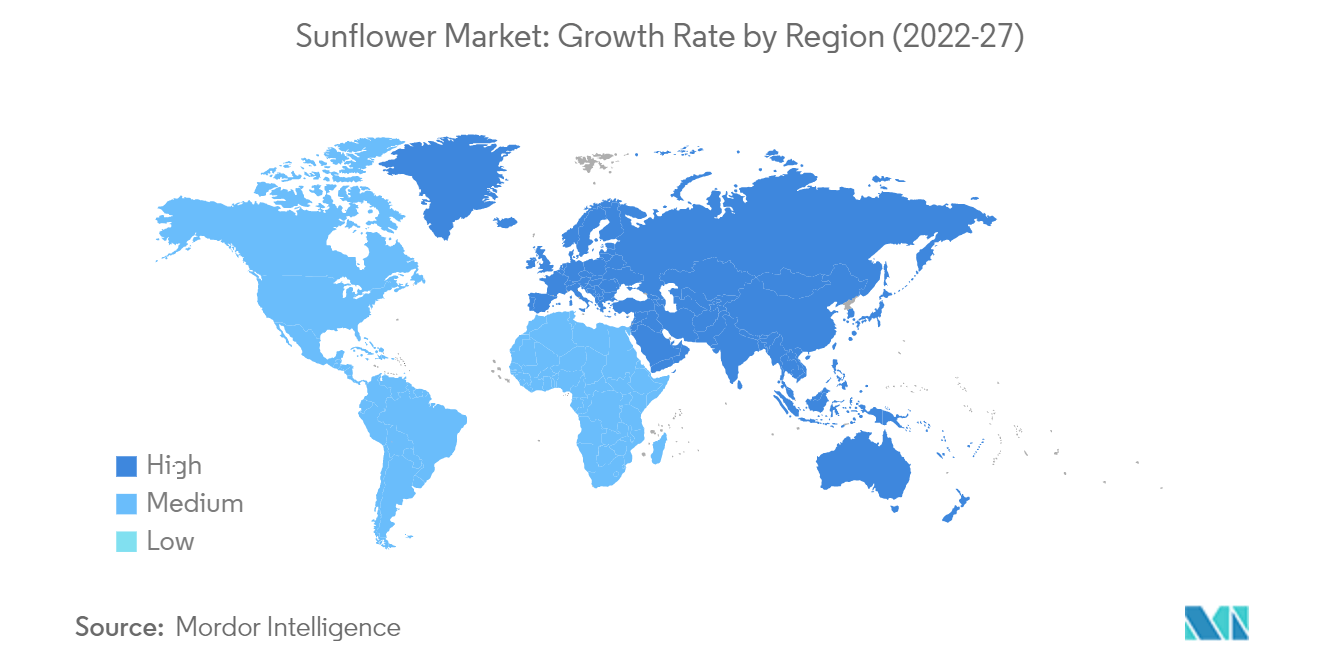Market Trends of Sunflower Industry
This section covers the major market trends shaping the Sunflower Market according to our research experts:
Rising Opportunity in the Oil and Snacks Industry
Sunflowers are used for manufacturing cooking oil, meal, and confectionery products. Oil and meal are processed from the same varieties. Oil derived from sunflowers are good in oleic acid, linoleic acid, and another essential nutrient that reduces the harmful cholesterol levels in the body. Oils with more significant percentages of linoleic and monounsaturated fats are healthier. Additionally, oil is suitable for people suffering from heart disease. The increased health benefits of sunflower oil and rising health consciousness among people around the world favor its usage and increase in production.
Furthermore, sunflower oil contains linoleic, essential fatty acids that are 69% polyunsaturated. Linoleic sunflower oil is excellent for cooking and includes a neutral taste. This characteristic enhances the taste of food instead of masking it. Linoleic oil is preferred in much of Europe, Asia-Pacific, and South America. The research study published in Oilseeds & fat crops and lipids (OCL) 2020 claims that sunflower seed oil is the fourth most popular vegetable oil consumed worldwide. Therefore, the sunflower seed oil is one of the healthiest vegetable oils for cooking.
Moreover, sunflower seeds can be eaten directly in the hull, dehulled, raw, or backed form, and in various natural health products, healthful snacks, and bakery items. The largest market for food-grade seeds is consumer retail, both domestically and abroad is anticipated to record growth during the forecast period, owing to the rising demand for sunflower oil and other sunflower-based processed foods.

Asia-Pacific is the Fastest-growing Sunflower Market
Asia-Pacific dominates the sunflower market in terms of consumption after Europe, holding around 12% of the global market. The usage of sunflower oil in bakery and confectionery products is more in this region. The governments in this region are focusing on increasing the use of healthy edible oils and reducing the consumption of partly hydrogenated oils (PHO) due to their adverse health impacts. For instance, in 2021, the Singapore Ministry of Health banned all PHOs as ingredients in all foods, including fats, oils, and pre-packaged foods. Therefore, such increased initiatives by the government cater to the market's growth.
Moreover, According to FAO, the production of sunflower seeds is more in China, followed by Myanmar and India with 2,400, 260, and 213 thousand metric tons, respectively. Consumers are increasingly turning towards sunflower oil, which increases consumption by about a five-fold rise over the past 15 years. Additionally, the rising number of supermarkets and retail stores is rapidly increasing the demand for various sunflower seeds flavors. In addition, this region's market is driven by higher disposable incomes and increased health consciousness.
Furthermore, China tops in exports at the country level, followed by Turkey. According to the ITC trade map, in 2021, China exported 426,987 tons of sunflower seeds, and Turkey exported a quantity of 108,204 tons. The rise in exports will aid the market's growth in the coming years. Along with this, manufacturers are focusing on providing healthier product offerings. As a rich source of fiber, a demand for sunflower seeds is rising for manufacturing animal feed products in the livestock industry.


